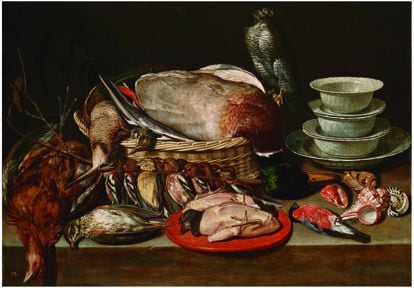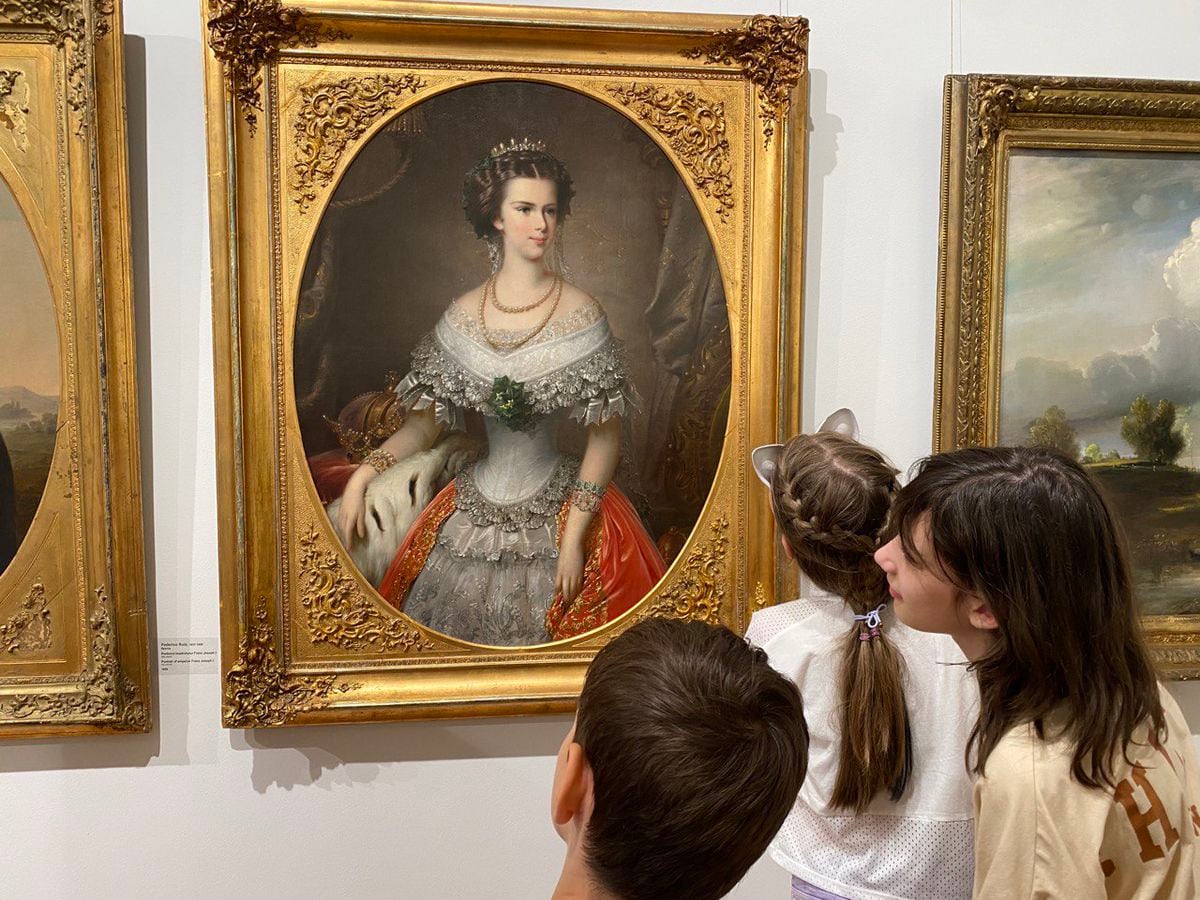“Let's see if we find a bad picture.
There are not many".
Alejandro Vergara Sharp (Madrid, 61 years old) walks leisurely through the rooms of the Prado Museum, which exhibits 1,292 of the 8,158 paintings that he treasures.
Although they represent a minimal part of the total collection (39,804 pieces with drawings, prints, photographs, sculpture and other objects), the statement seems somewhat optimistic.
But Vergara knows what he is talking about.
In addition to being the museum's chief curator of Flemish painting, he has just published an essay with a provocative title in times of discrediting the hierarchy and devotion to the
like
:
What is quality in art?
(Three sisters).
Aware that there are no favorable winds for such a concept, he resorts to a time when they did: the 15th to 18th centuries, the triumphal moment of European painting.
"At that time there were two great parameters to measure quality: credibility and idealism," Vergara explains while continuing to search.
“On the one hand, that the figures seem to have volume, that their gestures seem real, that the evocation of movement is plausible and that the space seems to have depth, that is, it seems that what we see is a window to the real world.
On the other, that all this reflects an ideal world based on a notion of beauty related to ancient culture, with its statues, its iconography, its idea of spiritual elevation.
Of course there are exceptions (Brueghel, Rembrandt), but that is the minimum required.
Above are special artists.
But if you are below, your painting has no quality”.
Painting was a luxury industry that was produced in few places.
Buying paintings in Italy or Flanders was like today buying watches in Switzerland or fashion in Milan or Paris
In search of the famous bad painting of the Prado, Vergara stops at an exceptional one:
La Fuente de la Gracia
, a panel one meter eighty high, painted between 1440 and 1450 in Van Eyck's workshop: "In addition to that wonderful sky that evolves from white to blue at the top of the painting - pure idealism - the figures have a very difficult relief to get”.
And there, in this difficulty, a parameter as alien as realism to contemporary art comes into play: the craft.
"Seeing painting throughout the centuries has made us think that it is easy, that anyone can do it, but it is extremely difficult," the historian underlines.
“It requires a lot of training, a lot of study of the past.
It takes a century to achieve: Leonardo, Raphael or Michelangelo are trained on already trained painters.
If you spend all hours of the day with a teacher from the age of 12, copying good paintings and plaster statues, you develop a special ability to understand beyond.
For that,
And what about a painter who worked in a Spanish province without having seen what was being done in Rome?
"Well, he would paint badly, for sure."
Surprised at his own forcefulness, the Prado curator wonders: “Is it fair to demand more from someone like that than he can give if he has not been able to train, like Leonardo, with Mantegna and Alberti behind him?
Of course it is unfair, but quality has nothing to do with justice”.
In fact, he insists, it often has to do with geography: “The painting of those centuries is a luxury industry, which is produced in a few places and from there spreads to others who learn it.
Buying paintings in Italy or Flanders was today like buying watches in Switzerland or fashion in Milan or Paris”.
'Still Life with Birds, Porcelain and Shells' (1611), by Clara Peeters, belonging to the Prado Museum. COURTESY EDITORIAL TRES HERMANAS
Without daring to point it out as bad but as an example of a work whose author, Jorge Inglés, has not fully learned, Vergara stops at the
Altarpiece of the Joys of Santa María
.
Specifically in the portrait of the Marquis of Santillana.
"The Marquis is poorly painted," he says.
“His shoulders are in one plane and his head is in another.
This is provincial painting in the descriptive sense of the word.
Painting done in the Flemish style, but in Spain.
At this time, around 1455, in Flanders something like this no longer strains.
They would demand more.”
To demonstrate his thesis, Vergara points to the works of Juan de Flandes on the adjoining wall: “We don't know who he was, but Isabel la Católica makes him come from there because she wants a good painter.
And she knows if he hires a local one she's not going to have him."
Many artists painted paintings of different quality depending on the price they charged.
goy, for example
The author of
What is quality in art?
was in charge of rescuing Clara Peeters from the Prado warehouses and dedicating to her the first individual exhibition that the Madrid art gallery consecrated to an artist since its foundation in 1819. It was in 2016. The museum's collections house works by 71 women (compared to 5,000 men).
Along with Peeters, there is only one other painter in the department directed by Vergara: Catharina Ykens II, author of two garlands that are exhibited occasionally but not permanently.
Why?
"Because of a quality issue," she replies.
how not
And at the moment she remembers that for centuries the long training that led to a career as an artist was forbidden to women: residing for a long time in the home of a teacher, having companions with whom to compete, being part of the guilds or interacting with clients. .
Those who managed to stand out came from a family of painters or from a very high class.
Ykens II's paintings are "more than worthy", he affirms, but they are difficult to fit into an institution whose walls seem increasingly smaller due to "the conditions of contemplation to which we have become accustomed": in 1870 there were more than 400 works in the iconic central gallery;
today, 65.
There are flaws in classical painters that are virtues sought in artists like Matisse or Picasso
Vergara has preferred to focus on the four triumphant centuries of the old masters because the quality criteria were then very clear: “The parameters were so rigid and lasted so long – 400 years! – that it is understandable that the reaction was so virulent in the centuries XIX and XX.
To understand the art of that time, you have to take into account how they saw it: as a trade that had rules.
The opposite is misinterpreting what you see.
There are flaws in classical painters - that a fold is flat, for example - that are virtues sought by artists such as Matisse or Picasso.
And it is different to approach art thinking about ability than about gender equality or historical justice, which are some of the parameters that we legitimately use today”.
Another parameter, money, is not as recent as it seems.
“Most of the artists”, he explains, “painted paintings of different levels of quality depending on the price or the importance of the commissions.
The determining factor was the degree of participation of the workshop teacher.
And he gives the example of one of his favorite artists: Goya.
The portraits of him could be so irregular that a client asked a friend to intercede with the Aragonese genius so that he would take care.
He did not want, he told her, a vulgar painting, but one "as he does it when he wants".
In other words, with quality.
Exclusive content for subscribers
read without limits
subscribe
I'm already a subscriber



/cloudfront-eu-central-1.images.arcpublishing.com/prisa/VQTU76CCQRCCFMIRCRGOSKM7UQ.jpg)

/cloudfront-eu-central-1.images.arcpublishing.com/prisa/KXCDNWJR3VEUHHBRHIEWUQOTLU.jpg)
/cloudfront-eu-central-1.images.arcpublishing.com/prisa/6LR4RYAGZZBYTPDW3Y4WG67SQI.jpg)


/cloudfront-eu-central-1.images.arcpublishing.com/prisa/FGXUL7OIIZAFFCQQ24NITAWEEA.jpg)
/cloudfront-eu-central-1.images.arcpublishing.com/prisa/Z45E6KV7VJGUXAKJWH7VA4NJSE.jpg)




